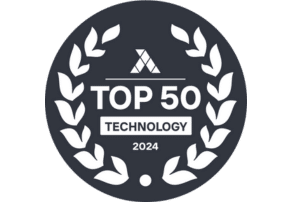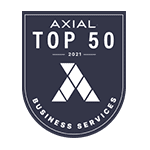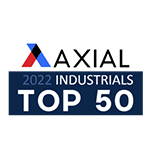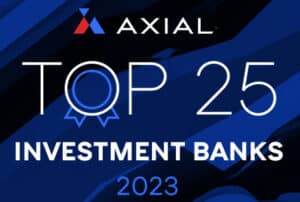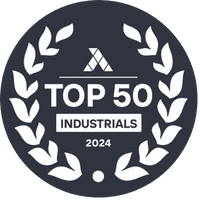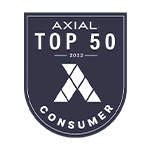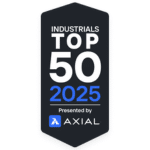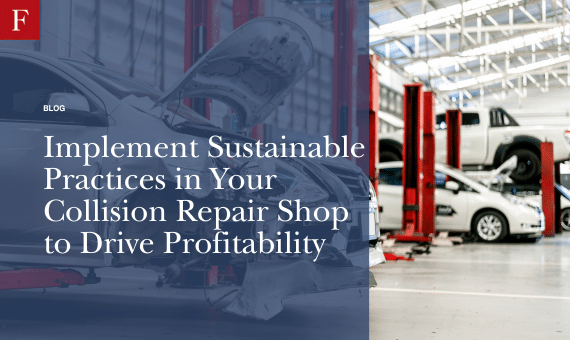
Implement Sustainable Practices in Your Collision Repair Shop to Drive Profitability
Sustainable practices in a collision repair shop improve workplace conditions, repair outcomes and the bottom line, while positively impacting the communities they serve.
he words “sustainable practices” often brings to mind efforts to be more environmentally friendly, but it goes beyond that. In an industry like collision repair, it also means ensuring long-term business viability and making a positive impact on the communities it serves.
Eddie Hightower, senior vice president of sustainability and social responsibility at Caliber Collision, appeared on The Collision Vision podcast, driven by Autobody News and hosted by Cole Strandberg, for the first episode of the “Sustainability in Collision Repair” series.
Hightower talked about Caliber’s sustainability initiatives, and how operators of independent shops can take meaningful steps toward a more responsible and forward-thinking business model.
An attorney by training, Hightower has been with Caliber for almost 10 years. He has been in his current position leading Caliber’s sustainability practice, which includes risk management, for the last three years.
What is Sustainability in Collision Repair?
“Sustainability can be everything,” Hightower said.
Caliber thinks about how sustainable practices align with its purpose, which, as its slogan says, is to “restore the rhythm of your life” for customers by performing quality repairs responsibly — which means considering the safety of employees, as well as the local community and environment.
Repairing vehicles “takes a lot of energy,” Hightower said. It also involves a lot of products, some of which create hazardous waste.
“It’s super important to think about our environmental impact in all facets of the work that we do,” he said.
As the largest collision repair company in the U.S., with about 1,800 stores in 41 states, Caliber has a responsibility to “set the standard” for being environmentally responsible, Hightower added.
“That includes the people that we impact, our own teammates and everyone we serve,” he said.
Hightower said he reports to Caliber’s CFO by design, to illustrate the positive return on investment (ROI) of sustainability initiatives.
For example, Hightower said about two years ago, Caliber retrofitted all of its shops with LED lighting, which uses less electricity than incandescent lights. The company analyzed the economic impact, but it also looked at the effect it had on employees.
Caliber found “being able to see better really equates to a better repair,” he said.
Further, it made Caliber’s shops more attractive to other technicians who wanted to work in the “nice, bright center,” he added.
“In doing the LED lighting retrofit, we not only improved the actual working conditions and the outcomes, but we also contributed to the bottom line,” Hightower said.
Caliber also works hard to make sure estimates are accurate to improve the repair process and reduce waste, by ensuring the right parts are ordered the first time, Hightower said.
Technician training is key. “We invest millions of dollars in ongoing training to keep up with the best practices across our space,” Hightower said.
Caliber is increasing its use of low-bake coatings, which require lower temperatures and less energy to dry them, speeding up the overall repair process.
Digital color-matching systems are reducing do-overs in the mixing room, and Caliber’s paint suppliers are helping the company’s painters reduce overspray.
“That’s one of our big focus areas,” he said. “That’s good for the environment. It’s good for our bottom line, and it’s really good for our customers, who get a great result on the on the spray.”
Analyzing Caliber’s Carbon Footprint
Caliber started reporting on its baseline greenhouse gas emissions in 2022, Hightower said, which classifies emissions into three “scopes,” one of which is focused on indirect emissions in the supply chain.
The MSO worked with an energy use management partner “to identify opportunities to improve our energy consumption and to be greener in what we’re doing,” Hightower said.
For example, Caliber has instituted a nationwide HVAC system maintenance program to ensure units are running efficiently and regular maintenance, like changing filters, is being performed.
“We have what we affectionately call a ‘rip and replace’ program as well, where we identify those older, less efficient HVAC units and we replace them with more energy efficient, newer models,” Hightower said.
More than 80% of Caliber shops now have a “smart thermostat” that turns off HVAC units when they’re not needed, like when the shop is closed, but ensures the temperature is already comfortable when the shop opens for the day. That avoids the energy spike and stress on the HVAC unit that would be caused by quickly bring the temperature inside the shop down to 70 degrees first thing in the morning in a very hot climate, like Arizona in the summer, Hightower said.
Caliber is “acutely aware” of the cost of energy, Hightower said, as controlling those costs also reduces what it has to pass on to its customers.
How Sustainable Practices Affect Profitability
Sustainability is “just really good risk management,” Hightower said.
Consolidators like Caliber look at potential acquisition shops’ risk management practices, he said.
“They want to see, are you environmentally conscious? Is your equipment up to date? Are you following all the repair procedures? Are you invested in your teammates so you have a stable workforce? Are you providing benefits to them? What’s the impact on the community?” he said.
In collision repair, it’s all about technicians, and “employers of choice” offer good work environments with clean, well-lit and well-equipped spaces, and benefits for its employees from day one, like health care and continued training, Hightower said.
Well-trained and satisfied technicians also attract OEM partners, which is key to earning certifications, he pointed out.
“All of that goes together to tell your sustainability story,” Hightower said. “They want to see, are you a good risk? And that all ties back to, are you engaging in what we would call sustainable business practices?”
How to Start Focusing on Sustainability
The first step to a “sustainability journey” is understanding the shop’s material items. Hightower said Caliber identified all of those items in its 2023 report, available on its website, after it interviewed stakeholders, including employees, managers and insurance partners.
“[Material items] just means really important items, things that you need to be focused on,” Hightower said. High on that list for Caliber is completing safe repairs, and providing a safe work environment.
From there, shop owners can decide which investments to make to support those material items.
Then, “you just start the plan. You start to work on…how do we build these sustainable practices into our business,” Hightower said.
He said when operators start looking at what they need to put in place and what they already have, “I’ll give a little secret — you may find out, especially if you’re just doing this for the first time, that you have a lot of these things in place.”
For instance, when Caliber started looking at sustainable practices three years ago, after Hightower first assumed his current role, the company was already using waterborne paints.
“That wasn’t my idea, but that’s something that they were doing and continue to expand into our business, because it made good business sense and was environmentally friendly,” he said. “I was able to capture that and tell the story in a sustainability way. You may be surprised that many of the things that you’re doing right now are really a part of a sustainability plan.”
The Future of Sustainability in Collision Repair
Hightower said he thinks sustainable practices will only become more ingrained in collision repair business practices over the next several years.
As climate change drives extreme weather events, like hurricanes in the Southeast last fall and wildfires in Los Angeles early this year, it affects companies like Caliber that have a large physical footprint throughout the country.
“I think that that’s going to take a front seat in deciding where are we going to build? What financial implications does that have?” he said. “Obviously a lot of people live in Florida, and we’re not going to stop building in Florida. But what does that mean to us from a financial impact perspective? What do we need to be doing from a financial planning way that has a sustainable component to it, but also a real bottom line impact?
“I think it’s just going to become increasingly important, especially as we continue to grow over the coming years,” he added.
Part of Caliber’s sustainable practices include giving back to its local communities. Hightower said the company already restores a lot of vehicles for the National Auto Body Council’s Recycled Rides program, which donates refurbished vehicles to people in need, but it is looking to further expand its involvement. Caliber also led a fundraising effort for parts of the Southeast affected by last fall’s hurricanes, and last year, its annual food drive donated enough money to provide the equivalent of 5 million meals to food banks around the country.
“We live and work in these communities, and so we like to make sure that our community impact efforts really keep that in mind,” he said.
Caliber’s Technician Apprentice Program (TAP), which launched in late 2022 to provide paid, hands-on training to prepare apprentices for a career in collision repair, recently graduated its 2,000th apprentice, Hightower said, and is aiming to reach 3,000 graduates in 2026.
The need for technicians is growing everywhere, Hightower said, making training programs like TAP necessary.
“We don’t have enough people coming into our industry, and so that’s why [TAP] is so important, just not just for Caliber, but more generally for the industry,” Hightower said. “We feel that we’re doing our part to help do that.”
Previously published on Autobody News by Abby Andrews




